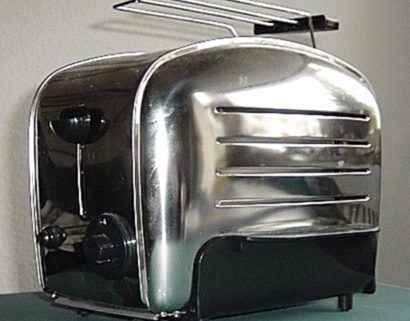The Internet of Things: Who’s in Your Bed…or Toaster?
This is an article about your toasters, toothbrushes and TV’s, and your refrigerators and the locks on your front doors. Your new cars and baby monitors and your wrist-worn exercise trackers. And let’s not forget watches and even your mattress covers. Yes, I said mattress covers.
I’m talking about the “Internet of Things” and how our homes are ripe for anyone and everyone to use our gadgety-things as listening devices. That’s right, the tinfoil-hat-wearing-folks were absolutely and undeniably correct. Our toothbrushes are indeed capable of spying on us.
The Internet of Things is basically a system of sorts that’s built on cloud computing, where sensors built into our gadgets—FitBit, TV, appliances, etc.—send and store collected data. Information received from those sensors is what allows the above-mentioned mattress cover to learn your sleeping habits and then adjust the temperature of your bed to one that’s comfortable to you. It even monitors your sleep through the night and makes whatever changes that may be needed as the night goes on.
The mattress cover also learns your normal bedtime and prepares the bed for you in advance of your pajama-wearing arrival. And…it checks the door locks to be sure they’re secure, switches off lights, sets the home thermostat, sets the alarm clock, switches off the stereo should you have forgotten to do so, and it’s even capable of turning on the coffee pot as soon as your feet hit the floor in the morning.
The smart-mattress cover connects wirelessly to your other gadgets to gather intelligence about your daily activities, such as the amount of exercise you had and what you ate. It uses the data to create the perfect bedtime rest environment. This thing even wakes you when you’ve reached the precise moment of light sleep that’s optimal for starting your day.
Sure, all of this sounds wonderful, however, hackers can use current information to see when you’re in deep sleep and then use your very own mattress cover to switch off your alarm system, unlock your front door to gain access to and steal your other smart stuff, including the doorknob, if so desired. There’s even a built-in microphone and who knows what that’ll detect…
Next, your car with it’s fancy GPS, emergency response systems, and back-up cameras. Yes, those systems are easily hacked and easily used by both the government and bad guys, with the latter desiring to steal your car or to possibly kidnap the occupants. Hackers can listen to conversations, use the GPS to locate the car, and activate the camera to view its surroundings.
Of course, you’ve all heard about criminals activating baby monitors and other household cameras, and the WiFi enabled toys for the purpose of locating children. The same is so for wearers of exercise and activity monitoring devices whose wearers can be quickly and easily located.
Smart sensors are being installed in concrete bridge decks that will enable your car to know in advance if icy conditions exist, or if the bridge is damaged and in danger of structure failure. Your car will soon be able to communicate with bridges and roadways and then tell its driver to select an alternate route when problems exist.
Police body cams and dash cam video recording devices are all susceptible to hacking. I suppose it’s not necessary to detail how harmful it could be for a hacker to destroy official evidence footage.
Anyway, the Internet of Things is now freakishly huge and freakishly spooky. There’s even a search engine devoting to allowing subscribers view live streams of non password-protected webcams, such as those in baby monitors, security cameras, computers, and televisions. This particular search site also features back rooms of banks, marijuana grow operations, school classrooms, private residences, and more. Any camera that’s not protected could be sending its live feed to this site, among many others all over the world, including to your neighborhood robber-rapist-pedophile-killer’s computer.
Remember, some devices, especially newer ones, have the option of password protection and opting out of cloud storage and communication, but many users skip the “opt out” function during device set-up.
Who knows, your car could soon talk to my car and tell it to stop tailgating. And, of course, my car could respond to yours with a flip of a middle mirror.
Seriously, secure your devices and encrypt the communication between them. Instruction manuals should provide all the necessary information. If you do nothing, the device may be set to send it’s data to a cloud thats accessible by the manufacturer which is likely in another country. And, by doing nothing you’re leaving your entire home open to cyber-snooping. Otherwise, set an extra place at the table and add another pillow to the bed, because you just might have unexpected company.
Sleep well tonight, my friends. Sleep well…





